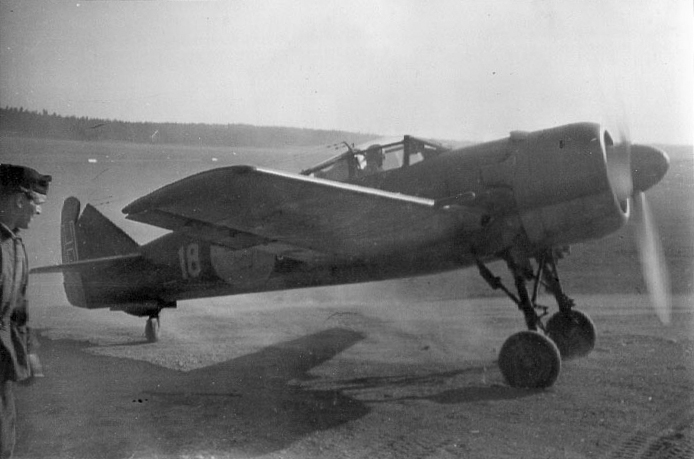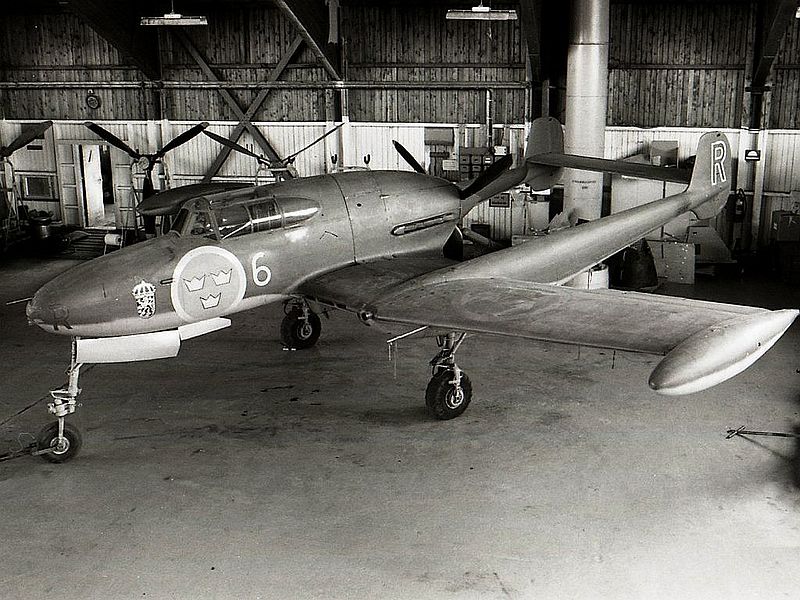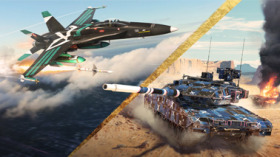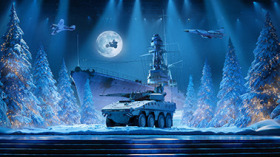
- For PC
- For MAC
- For Linux
- OS: Windows 10 (64 bit)
- Processor: Dual-Core 2.2 GHz
- Memory: 4GB
- Video Card: DirectX 11 level video card: AMD Radeon 77XX / NVIDIA GeForce GTX 660. The minimum supported resolution for the game is 720p.
- Network: Broadband Internet connection
- Hard Drive: 22.1 GB (Minimal client)
- OS: Windows 10/11 (64 bit)
- Processor: Intel Core i5 or Ryzen 5 3600 and better
- Memory: 16 GB and more
- Video Card: DirectX 11 level video card or higher and drivers: Nvidia GeForce 1060 and higher, Radeon RX 570 and higher
- Network: Broadband Internet connection
- Hard Drive: 62.2 GB (Full client)
- OS: Mac OS Big Sur 11.0 or newer
- Processor: Core i5, minimum 2.2GHz (Intel Xeon is not supported)
- Memory: 6 GB
- Video Card: Intel Iris Pro 5200 (Mac), or analog from AMD/Nvidia for Mac. Minimum supported resolution for the game is 720p with Metal support.
- Network: Broadband Internet connection
- Hard Drive: 22.1 GB (Minimal client)
- OS: Mac OS Big Sur 11.0 or newer
- Processor: Core i7 (Intel Xeon is not supported)
- Memory: 8 GB
- Video Card: Radeon Vega II or higher with Metal support.
- Network: Broadband Internet connection
- Hard Drive: 62.2 GB (Full client)
- OS: Most modern 64bit Linux distributions
- Processor: Dual-Core 2.4 GHz
- Memory: 4 GB
- Video Card: NVIDIA 660 with latest proprietary drivers (not older than 6 months) / similar AMD with latest proprietary drivers (not older than 6 months; the minimum supported resolution for the game is 720p) with Vulkan support.
- Network: Broadband Internet connection
- Hard Drive: 22.1 GB (Minimal client)
- OS: Ubuntu 20.04 64bit
- Processor: Intel Core i7
- Memory: 16 GB
- Video Card: NVIDIA 1060 with latest proprietary drivers (not older than 6 months) / similar AMD (Radeon RX 570) with latest proprietary drivers (not older than 6 months) with Vulkan support.
- Network: Broadband Internet connection
- Hard Drive: 62.2 GB (Full client)
Flygvapnet Griffon Spitfire skin for the Spitfire Mk. 22 by Thorvald_Gerwulf
Sweden was among the first countries to see the value of military aviation, acquiring their first reconnaissance monoplanes in 1912. The Swedish Air Force, the Flygvapnet, was officially founded on the 1st of July 1926.
|
Sweden had decided to stay neutral in European conflicts, which kept them out of the First World War and allowed them to buy equipment from all parties, including British, French, Italian, German, Dutch, and American designs. They also built their own aircraft like the Jaktfalken biplane fighters.
By the late 1930s, even Sweden took the threat of war seriously and modernize. The flygvapnet managed to acquire Junkers 86 bombers, but by the time Germany invaded Poland in 1939, the best fighter of the Flygvapnet was the Gloster Gladiator.
When the Winter War between the Soviet Union and Finland began in November 1939, Flygflottilj 19, a volunteer flying regiment operating Flygvapnet Gladiators and Hawker Hart bombers, was sent to defend northern Finland. F19 flew their first combat mission on January 12th 1940 against a Soviet airbase. Three I-15bis fighters were destroyed on the ground, and another was shot down by lieutenant Ian Iacobi, who became the first Flygvapnet pilot to score an aerial victory.
The mission came with a heavy price: one Hawker Hart was shot down on the way back and two Hawker Harts collided deep over enemy territory. One crew member was killed, and two who managed to bail out were captured by Soviet troops. The observer of one Hart, Matti Sundstén, was stuck in his seat and plummeted to the ground with the wreckage, but miraculously survived without injury. Sundstén recovered his gear and began skiing to friendly lines. After evading capture for days and skiing 90 kilometers, Sundstén encountered Finnish soldiers. He exhausted his limited Finnish vocabulary so he wouldn't be shot as an enemy combatant, or even worse, as a Swede. Sundstén returned to duty a few days later after receiving treatment for frostbite.
F19 continued to patrol over northern Finland mostly encountering unescorted bombers such as SB 2s and TB-3s. When the Winter War ended on March 13th, F19 had flown 464 sorties and shot down 8 enemy aircraft for the loss of 3 men.
A couple of Swedish pilots also volunteered for the RAF, but the most successful, and only ace of Swedish descent was William Anderson, who had emigrated to Chicago as an infant. Anderson flew a P-51D named ”Swede's Steed”, and scored seven victories against German fighters. Anderson was also one of the first pilots to shoot down a V-1 missile on June 17th 1944.
|
The Flygvapnet finally began to modernize in 1940 with Italian CR.42 and Re.2000 fighters as well as American P-35s. Post-war imports included Spitfires, P-51Ds, de Havilland Vampires, and Hawker Hunters.
Sweden also developed their own designs such as the FFVS J 22, while Swedish aircraft manufacturer Saab made Saab 17 and Saab 18 bombers, and eventually the unique twin boom Saab 21 fighter. It was later developed into the J 21R, one of the only jet fighters successfully converted from a propeller-powered design.
After the J 21R, Saab designed the Tunnan. The J 29 Flying Barrel was introduced in 1950 as a contemporary of the MiG-15 and F-86 Sabre. It eventually saw combat in 1961 with the UN in the Congo, based on primitive runways deemed too short for F-86s. While the Katangese forces didn't have serious air power, the Tunnan proved to be a rugged fighter and combat-capable in difficult conditions.
To honor Swedish pilots, as well as the unique Flygvapnet aircraft, we present the Swedish Air Force insignia to be introduced in War Thunder in a future patch.
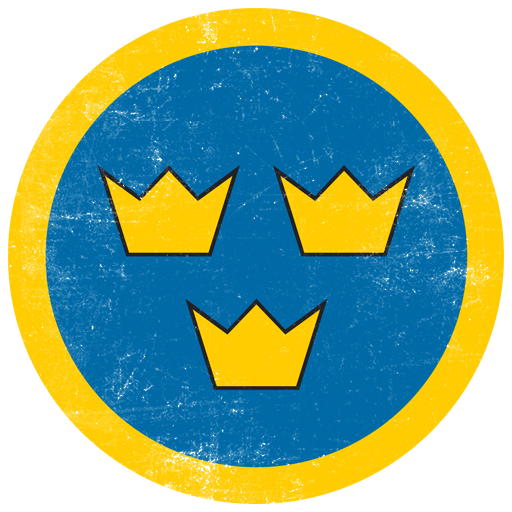
The War Thunder Team
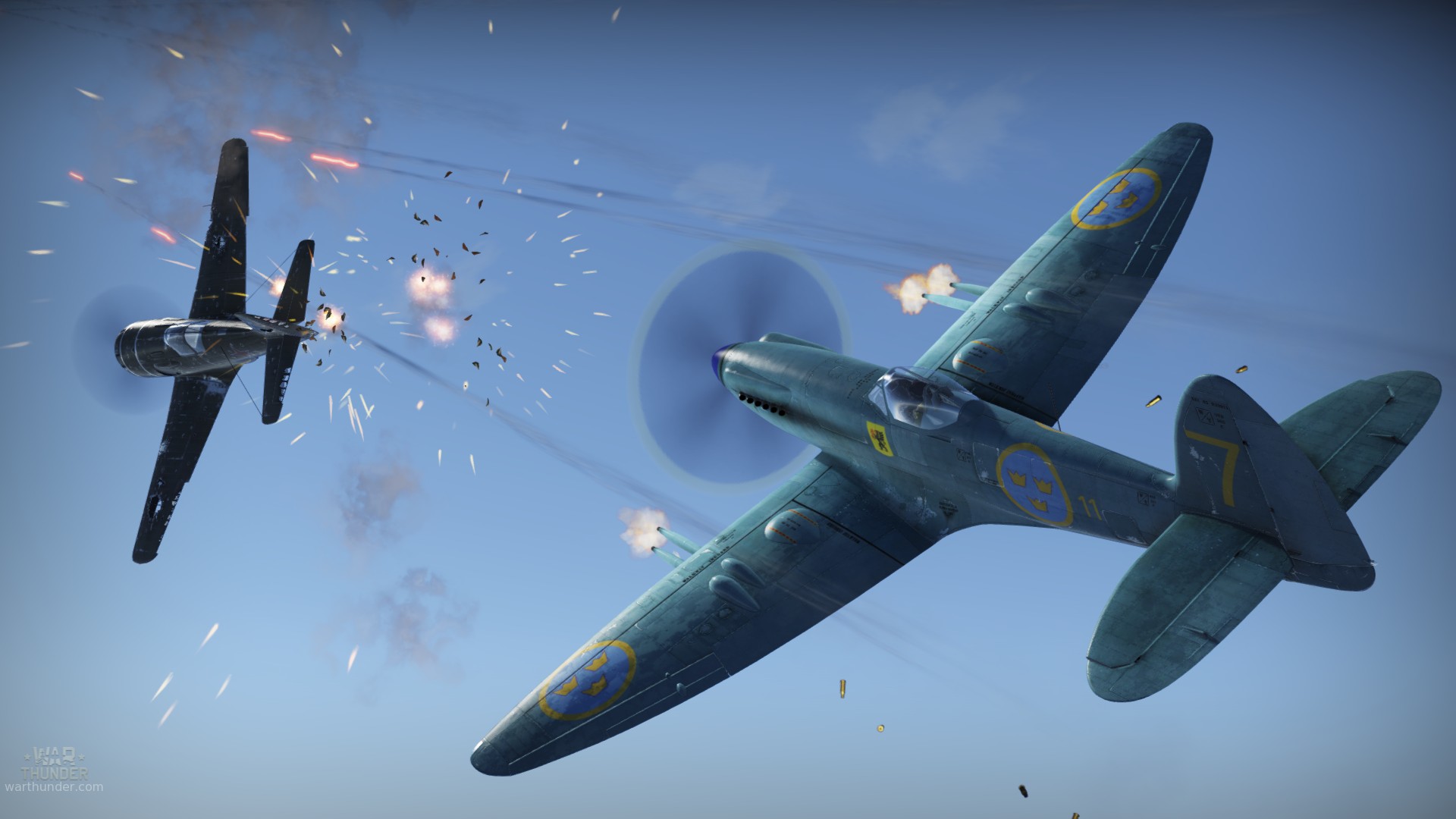
_278_H_(7727430914).jpg)
